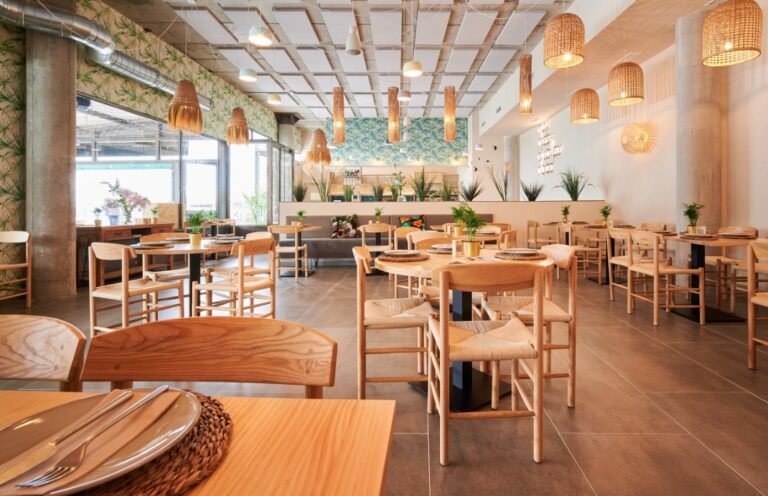Restaurants aim to differentiate themselves in the competitive dining industry by enhancing their interior design and food offerings. The furniture selection is one of the most important factors in producing a great dining experience. Restaurant furniture expresses the identity and values of the company directly and goes beyond just practical elements. This article delves into how a restaurant’s identity may be communicated and embodied via well-chosen furniture, thereby improving patrons’ dining experience.
IMPORTANCE OF BRAND IDENTITY
Brand identity includes the visual, emotional, and cultural components that set a company apart from its rivals. This identity is critical to restaurants because it influences patrons’ expectations and impressions. Every element of the space, including the furniture, influences how visitors perceive the brand from the moment they enter. In this instance, furniture is a concrete embodiment of the restaurant’s culture, successfully communicating its mission and core principles.
ALIGNING FURNITURE WITH BRAND VALUE
Aesthetic Consistency: Furniture’s aesthetic appeal has a big impact on how well it matches a restaurant’s brand identity. To convey exclusivity and luxury, a fine-dining restaurant of the highest caliber may choose sleek and stylish restaurant furniture made of luxurious materials like polished wood, velvet, and leather. Conversely, a laid-back, family-friendly restaurant can choose strong, clean materials, bold hues, exciting friendliness, and warmth.
Cultural Representation: Furniture may be a potent instrument for expressing a culture’s identity at eateries focusing on a specific food or culture. While a Japanese sushi bar may utilize clean, minimalist furniture to mirror the traditional Japanese style of simplicity and elegance, an Italian trattoria would have rustic wooden tables and chairs reminiscent of a rural home. Restaurants may create an immersive experience that is in line with their menu by using culturally appropriate furniture.
Sustainability and Ethical Values: Many restaurants place a strong emphasis on sustainability and ethical sourcing in today’s environmentally sensitive market. These ideals can be reflected in furniture made of recycled materials, salvaged wood, or wood that has been harvested sustainably. These decisions not only appeal to guests who care about the environment but also support the restaurant’s sustainability efforts. Furthermore, collaborating with regional craftspeople to create unique furniture may demonstrate a dedication to promoting artistry and the local community.
Comfort & Customer Experience: A restaurant’s commitment to providing guests with a positive dining experience is directly impacted by the comfort of its furnishings. Spacious tables and well-made, ergonomic chairs can be telltale signs of a restaurant’s dedication to offering patrons a relaxing and pleasurable dining experience. To encourage customers to remain longer, a coffee shop that wants to be a warm, inviting place for people to linger and work can use plush, comfy chairs.
PRACTICAL CONSIDERATION
Durability and Maintenance: Furniture in restaurants needs to resist repeated cleanings and extensive use. Durability is, therefore, an important factor. Selecting easily maintained materials guarantees that the furniture will stay stylish and useful for a long time, upholding the brand’s reputation for high caliber and attentiveness.
Space Optimisation: Effective use of available space is crucial when designing a restaurant. The arrangement and selection of furniture should optimize seating capacity without sacrificing comfort. Thanks to modular furniture alternatives, restaurant layouts may be changed to suit varying group sizes and occasions. These alternatives can be flexible and represent a brand’s agility and customer-centric philosophy.
Cost & Budget: Although expensive, well-made furniture is an investment, balancing cost and usefulness is critical. Brands must assess the furniture options they choose regarding their long-term worth, considering things like longevity, upkeep expenses, and the possible influence on consumer happiness and brand perception.

